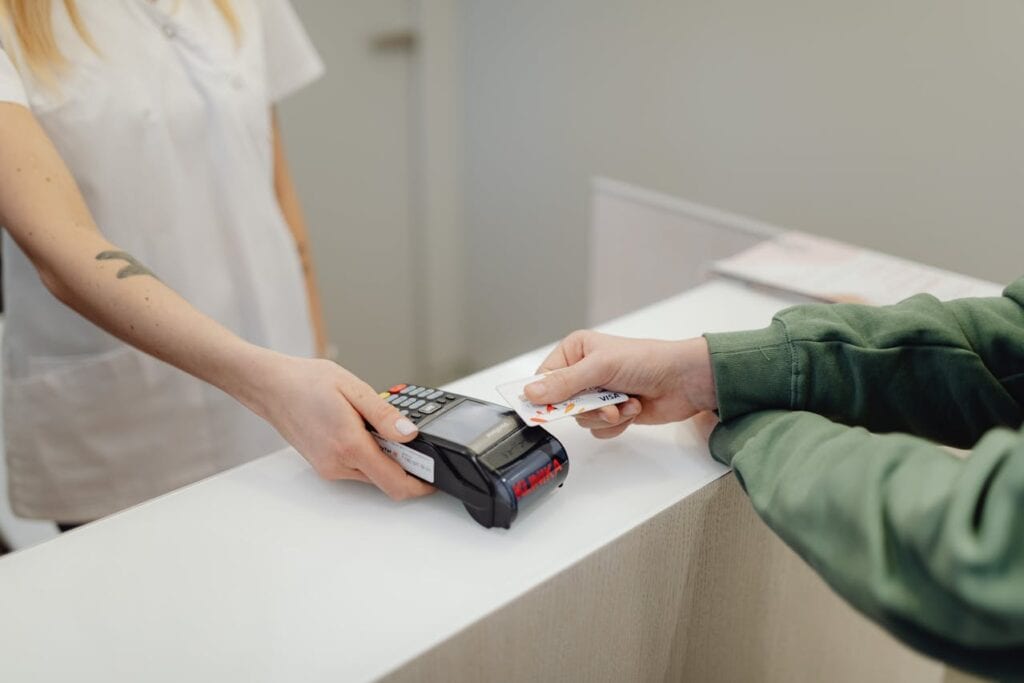
By Zackary Rhodes April 23, 2025
When you’re running a nonprofit, every dollar counts. Whether you’re supporting local schools, global aid, or community programs, you can do more with every donation if you keep administrative costs down. One area that often goes unnoticed but can stealthily deplete your resources is payment processing. Merchant fees for charities include credit card fees, transaction fees, and platform charges. Although these costs may seem inevitable, there are a few clever ways to cut them.
Why Payment Processing Fees Matter for Nonprofits
When someone donates to a nonprofit, they expect most, if not all, of that contribution to reach the intended cause. However, even small processing fees can reduce the final impact of a donation. Let’s explore how these fees work and why they deserve close attention.
The True Cost of Each Transaction
Most online donations go through a payment processor, which may charge a flat fee, a percentage of the transaction, or both. For example, a $100 donation processed with a 2.9% + $0.30 fee would cost the nonprofit $3.20. That may sound small, but if your organization receives thousands of donations, the costs quickly add up. Over the course of a year, merchant fees for charities can total thousands, or even tens of thousands, of dollars. That’s money that could otherwise support programs, staffing, or outreach efforts.
Donor Perception and Trust
Donors are becoming more conscious of how their funds are being used. They could be reluctant to make another donation if they learn that part of it is being used for transaction or administrative costs. Long-term trust can be developed by being transparent and demonstrating that your nonprofit makes a concerted effort to keep expenses to a minimum. This is when processing payments at a low cost turns into a valuable advantage. It enables you to optimize contributions while guaranteeing your supporters that their money is being managed appropriately.

Understanding the Fees: What Nonprofits Actually Pay
Before you can lower your costs, it’s important to understand where your fees come from and how they’re calculated. Different processors charge differently, and knowing how to read your statement is the first step toward savings. Let’s break down the basics of payment processing for charities.
Common Fee Structures
Payment processors typically charge fees in one of three ways:
- Flat-rate pricing: One fixed rate per transaction (e.g., 2.9% + $0.30), no matter what kind of card is used.
- Interchange-plus pricing: The actual interchange fee (set by card networks) plus a markup from the processor.
- Tiered pricing: Transactions are grouped into categories with different rates (qualified, mid-qualified, and non-qualified).
For nonprofits, reduced nonprofit rates are often available, especially through platforms that specialize in charitable giving or merchant services for social impact organizations.
Additional Costs to Watch For
In addition to the per-transaction fee, some providers add:
- Monthly account fees
- Chargeback fees
- PCI compliance fees
- Refund or reversal fees
These small charges can sneak up on your organization, particularly if you don’t track them consistently. It’s worth asking for a breakdown of all charges on your merchant account to identify areas for improvement.
How to Negotiate Reduced Nonprofit Rates
You don’t have to accept standard pricing. Many processors offer reduced nonprofit rates, you just have to ask for them. Whether you’re using a general-purpose payment platform or a dedicated nonprofit solution, you can often negotiate better terms. Let’s look at how to start that conversation.
Verify Your Nonprofit Status
Before applying for low-cost payment processing, make sure your nonprofit is properly registered with your payment provider. Most processors will ask for your 501(c)(3) status or other nonprofit designation to approve discounted rates.
Once verified, you may be eligible for:
- Waived monthly fees
- Lower transaction percentages
- Special donor support services
Request a Custom Quote
For a personalized price for your nonprofit, get in touch with your payment processor. Give information on the number of transactions, average monthly donation volume, and any planned initiatives. When businesses observe steady use or significant fundraising potential, they are frequently more inclined to give discounts. If necessary, be ready to present competitor rates and compare suppliers, particularly if you want to lower merchant fees for charities over time.
Ask for a Rate Review Annually
Even after securing reduced nonprofit rates, it’s smart to revisit your pricing every year. If your volume increases or your fundraising model changes (e.g., more recurring donations), your organization may qualify for better terms. Many nonprofits don’t realize that rates can be adjusted as you grow. Staying proactive helps you keep fees low and savings high.
Choosing a Payment Processor Built for Nonprofits
Not all payment processors are created equal. Some are built specifically for fundraising and understand the unique needs of nonprofit organizations. Others are designed for commercial sales and may not offer specialized tools or discounts. Let’s explore what to look for in a nonprofit-friendly processor.
Essential Features That Save Money and Time
When selecting a payment solution, prioritize these features:
- Reduced nonprofit rates with no hidden fees
- Automated donation receipts and tax-deductible confirmation
- Recurring giving support for monthly donors
- Integrated fundraising tools, such as donation forms or event ticketing
A platform that includes these tools can help you reduce the need for separate software or manual processes, making your payment system more cost-effective and efficient.
Examples of Nonprofit-Friendly Platforms
Several platforms are known for offering low-cost payment processing to nonprofits:
- Stripe for Nonprofits: Offers discounted rates for eligible organizations and integrates with popular donor platforms.
- PayPal for Nonprofits: Includes reduced fees (usually 1.99% + $0.49) and fundraising tools.
- Givebutter: Provides fundraising campaigns with optional processing fees that donors can choose to cover.
- Bloomerang and Donorbox: Combine donor management with integrated payments, often with lower processing costs for nonprofits.
Choosing a solution tailored for nonprofits ensures better tools, better support, and more favorable pricing from day one.
Encouraging Donors to Help Cover Fees
One of the simplest ways to reduce your processing burden is to ask donors to cover it themselves. Many donors are happy to pay a little extra to ensure their full gift reaches the cause. Here’s how to do that without disrupting the giving experience.
Use a “Cover the Fees” Checkbox
Donors might choose to pay the transaction charge at checkout on several contemporary donation platforms. This normally only adds a tiny amount to their total, usually a few of dollars for larger donations or a few cents for smaller ones. Many donors readily opt in when supplied with clear information. It’s a minor request that has a significant effect, particularly when hundreds of transactions are involved.
Be Transparent About Processing Costs
Donors are more likely to help if they understand why you’re asking. A short note that says, “Help us keep 100% of your donation by covering the small processing fee” can go a long way. Transparency builds trust and encourages continued support, two things that are critical to long-term donor retention.
Other Strategies for Reducing Merchant Fees for Charities
In addition to choosing the right processor and encouraging donors to help, there are several other ways to lower your overall payment processing costs. These tactics work well when combined with your core efforts.
Use ACH or Bank Transfers for Larger Donations
ACH transfers often have lower fees than credit card transactions. If you receive large gifts (e.g., $500 or more), encourage donors to use direct bank transfers instead. While this method may be slightly more manual, the savings can be significant, sometimes cutting fees by more than half.
Consolidate Your Platforms
You can be paying many sets of fees if you use several platforms for email campaigns, ticketing, events, and donations. Think about combining a few of your tools into one or two that provide a variety of functions under a single pricing structure. This simplifies your bookkeeping and donor interaction while also lowering merchant expenses for charity.
Review and Optimize Recurring Donations
Recurring donations can be an administrative burden if managed manually. Use platforms that automate billing, send renewal reminders, and allow donors to update their payment info without staff involvement. Automation helps reduce missed payments and processing errors, keeping your revenue stream stable and reducing unnecessary fees.

Tracking and Reporting: Know Where the Money Goes
To truly lower your costs, you need visibility. That means tracking your fees, monitoring patterns, and identifying which areas are costing you the most. Here’s how to stay informed and in control.
Review Monthly Statements Carefully
Payment processors send monthly reports, but many nonprofits overlook them. Take time to go over these statements and note:
- Total processing fees
- Average donation size
- Number of declined transactions or chargebacks
- Any unusual spikes in fees
This will help you identify hidden costs, refund trends, or opportunities to renegotiate your rates.
Use Dashboards and Analytics
Choose a provider that offers real-time dashboards and automated reports. These tools allow you to see your average donation size, how many donors cover their fees, and whether specific campaigns are cost-effective. With better insight into how your money moves, you can adjust strategies for low-cost payment processing and better resource allocation.
Conclusion
Although it may not be the most glamorous aspect of managing a nonprofit, processing payments is one of the most crucial. Your organization’s financial performance is strongly impacted by the fees you pay for each donation. You can reduce overhead and increase effect by aggressively seeking lower nonprofit rates, moving to low-cost payment processing providers, and maintaining open communication with your supporters. Making the most of each donation is the goal of managing merchant costs for charity, not taking short cuts. Additionally, your nonprofit may concentrate less on handling payments and more on making a difference in the world if you have the appropriate tools and tactics in place.